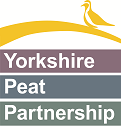...we just need to:
- raise the water table
- stop further erosion of peat
- revegetate bare peat
- establish blanket bog plants
Now, the aims may be simple but achieving them in one of the UK’s harshest environments is no walk in the park (or wade in the bog). Each site we survey has a different character, a different set of issues that require a tailored approach to restoration.
Fortunately, we are not short of experience in the YPP office. Our Project Manager, Tim Thom, has worked for 10 years to develop our technical specifications - you can find them on our resources page. For the wide range of problems that face peatlands , we have developed an equally wide range of techniques to solve them.
Blocking Grips and Gullies
This is the main focus of peatland restoration. Blocking drainage channels helps to slow the flow of water, helping reduce flood risk downstream. It also brings the water table closer to the surface.
Having the water table close to the surface is vital for forming peat, the material the locks up all that carbon; keeping our peatlands wet is so important when thinking about practical steps to fight climate change.
Depending on the type of drainage channel our restoration team find, there are a few different structures we use to block them. See some examples below:





